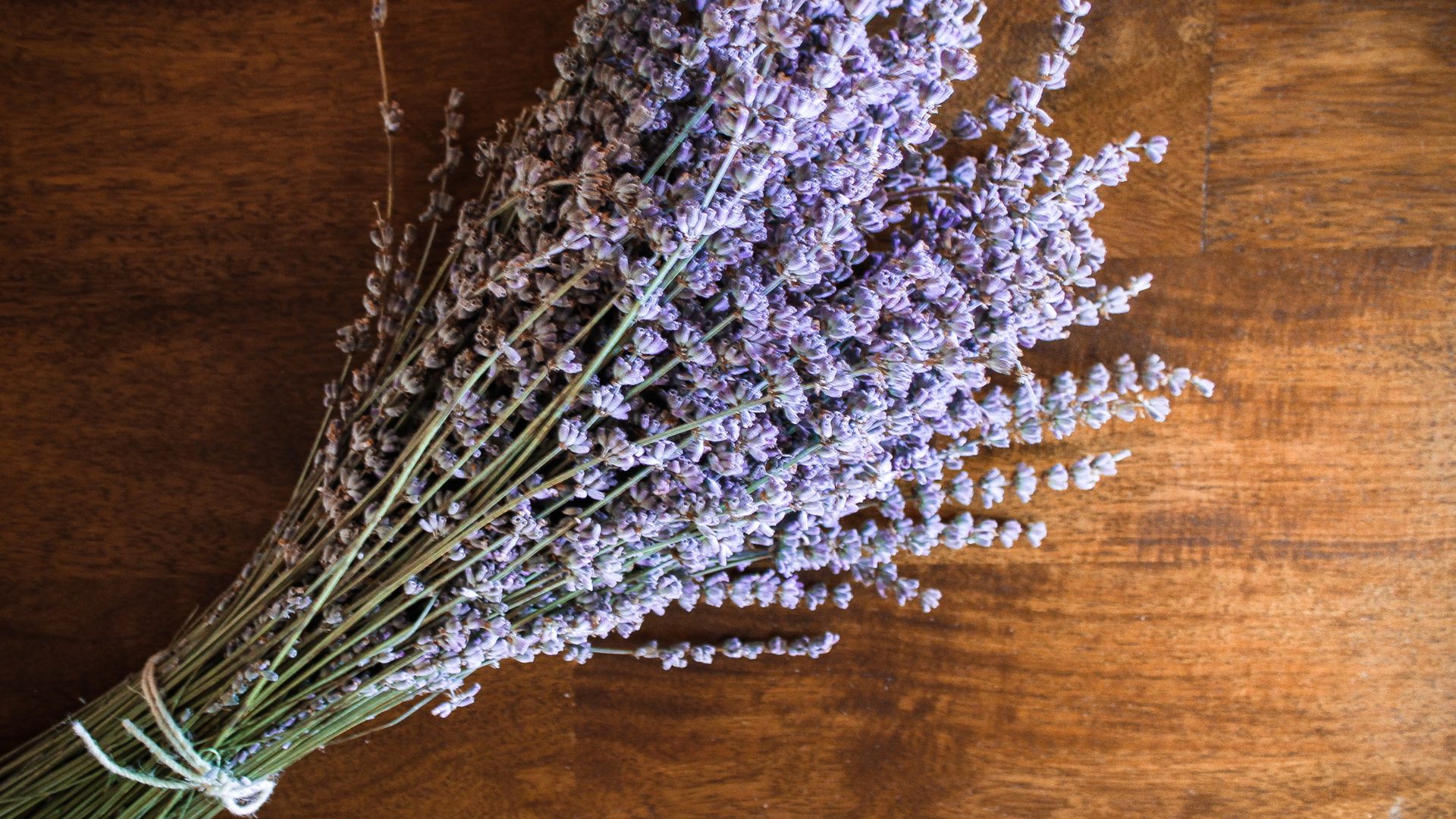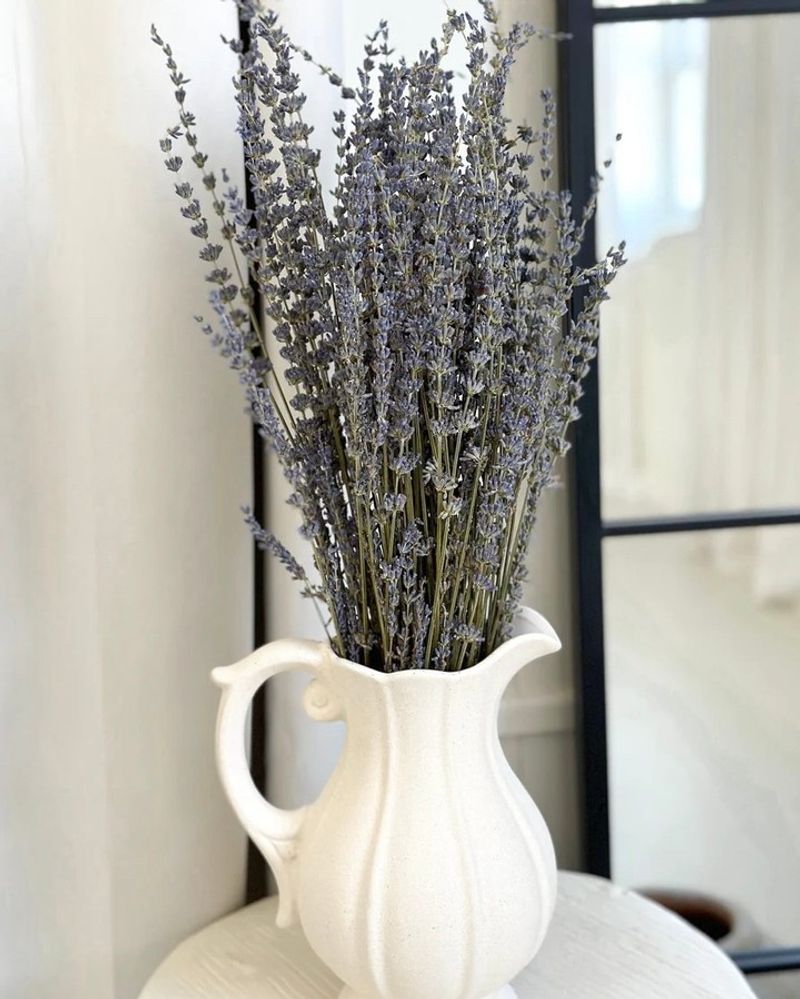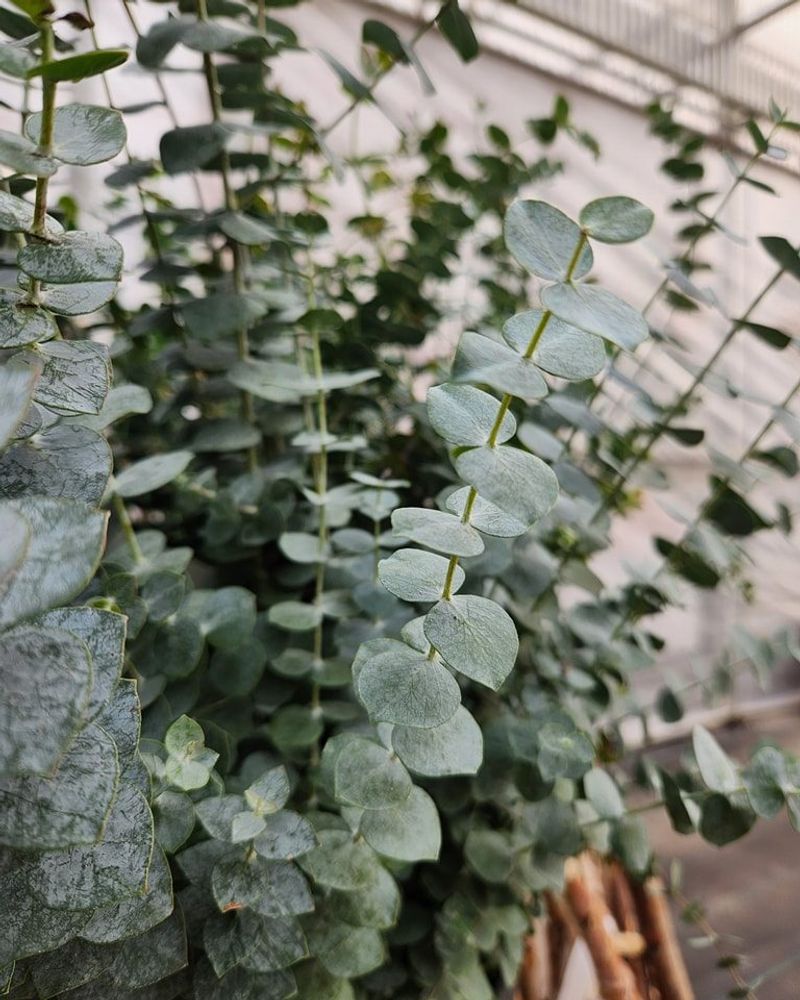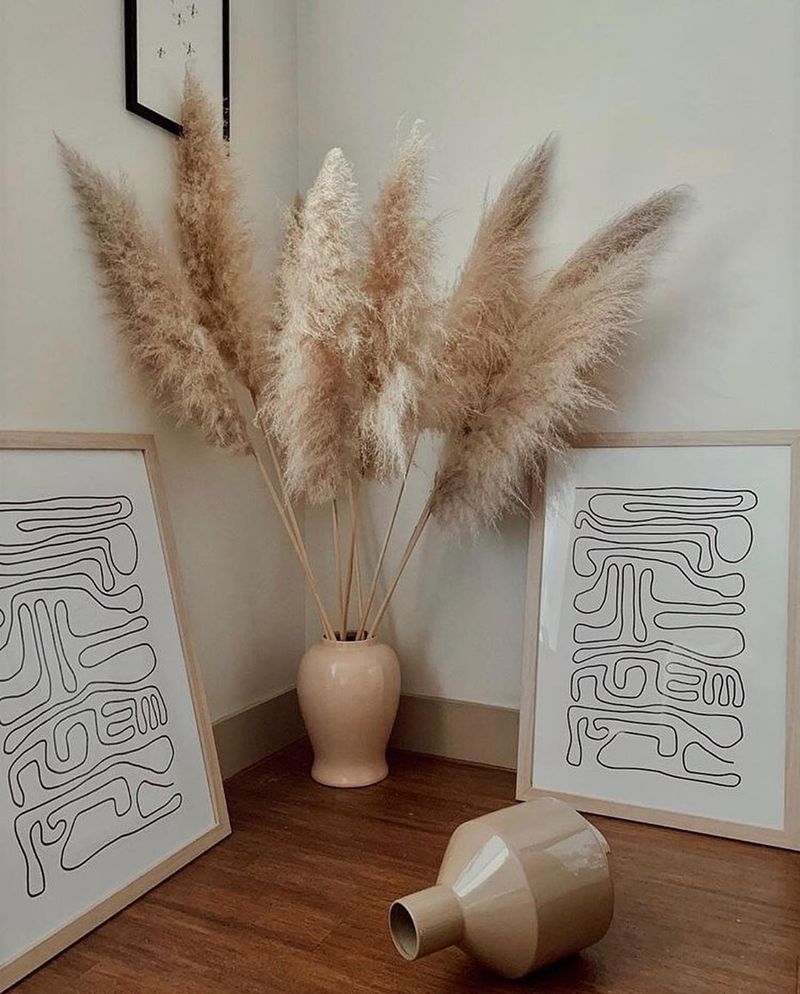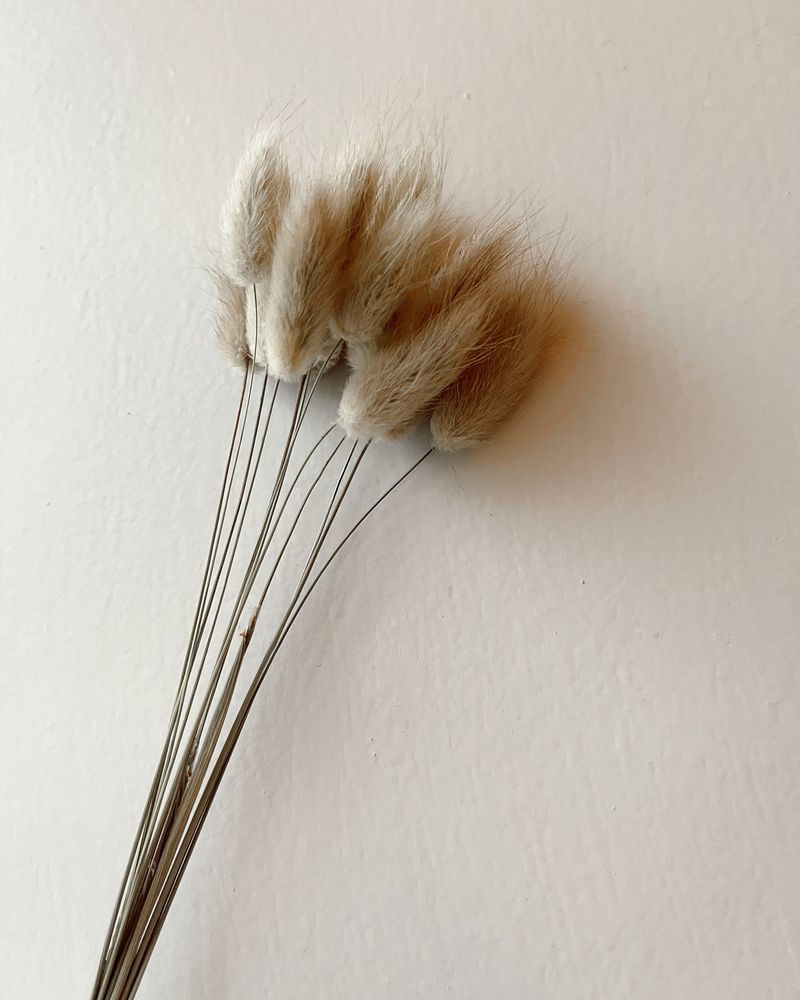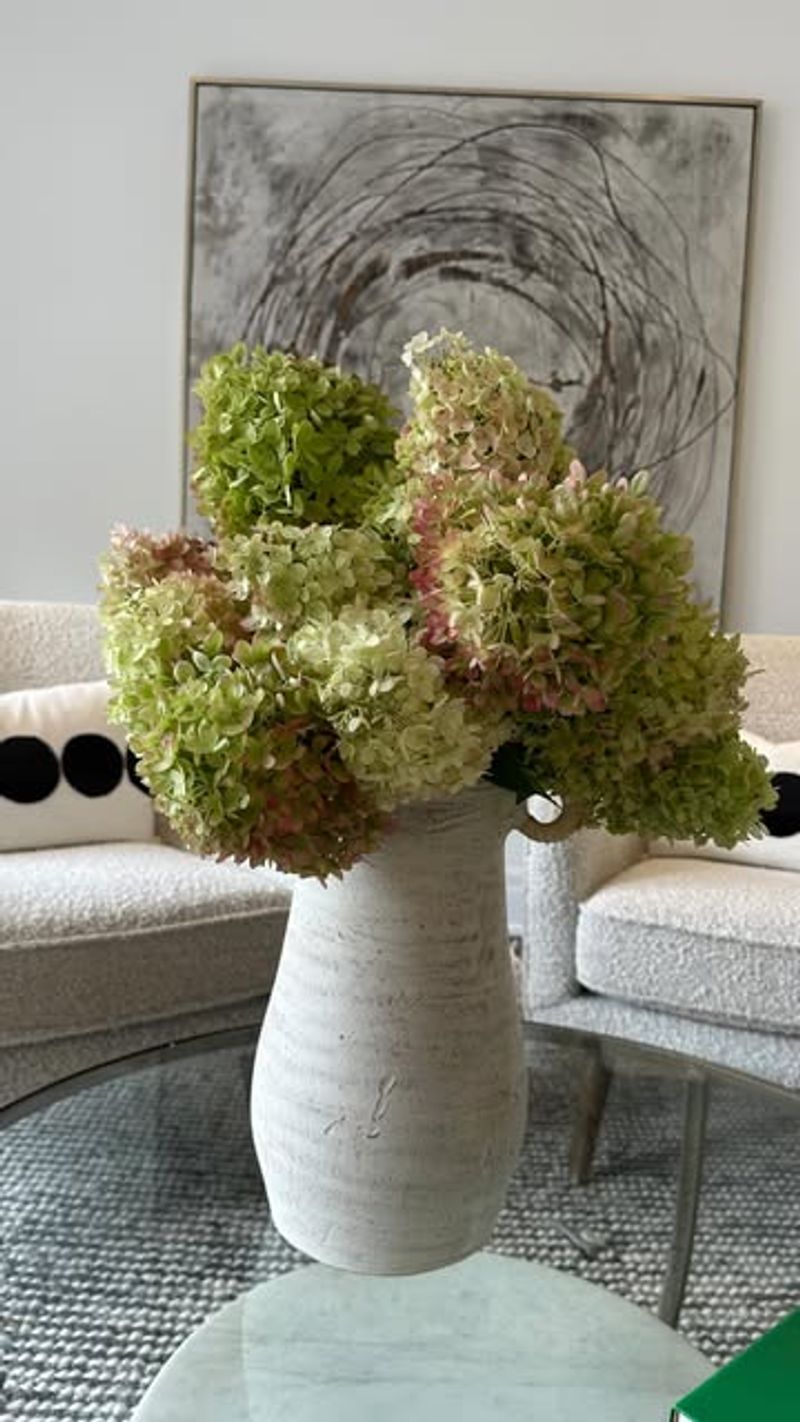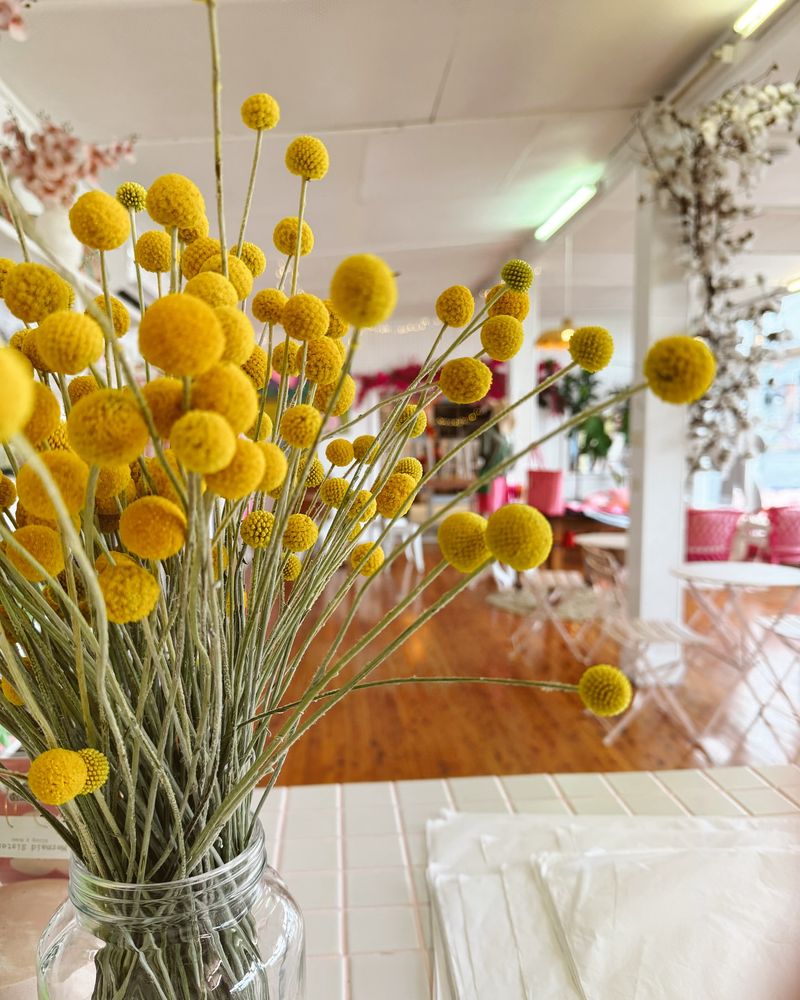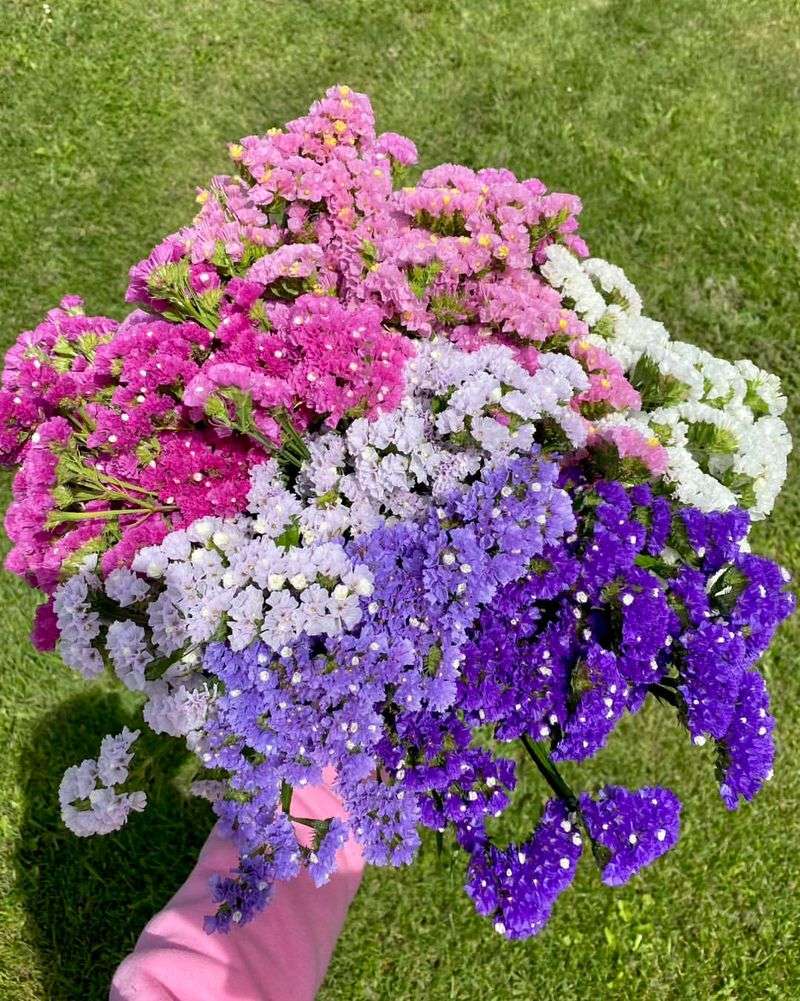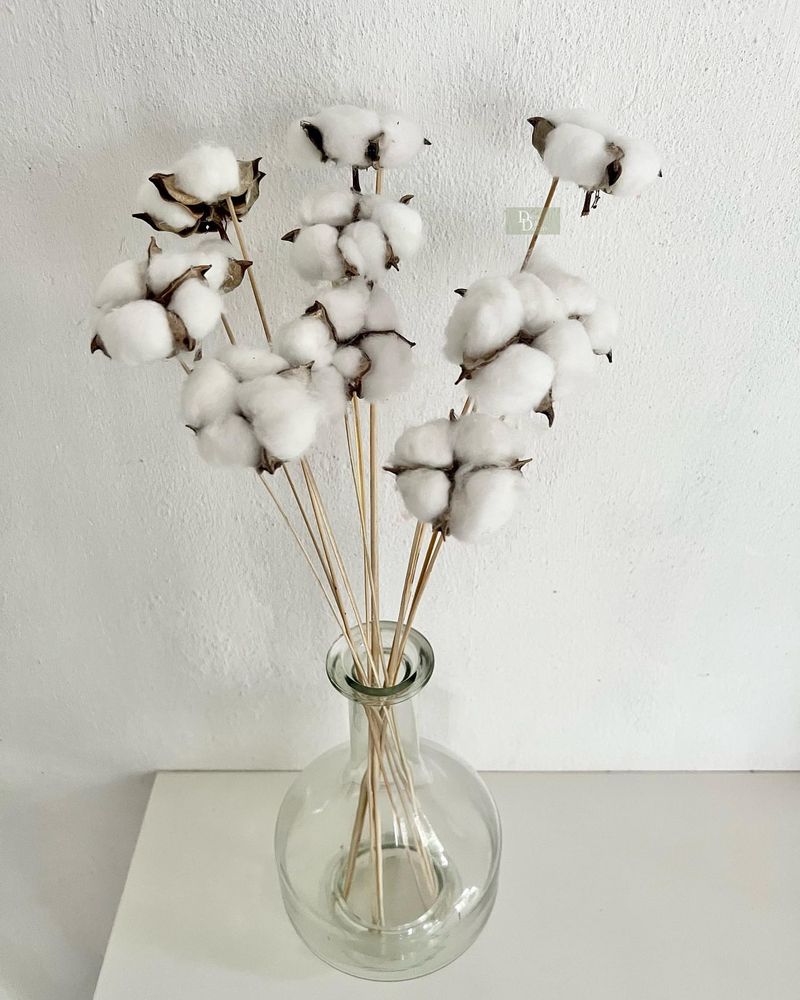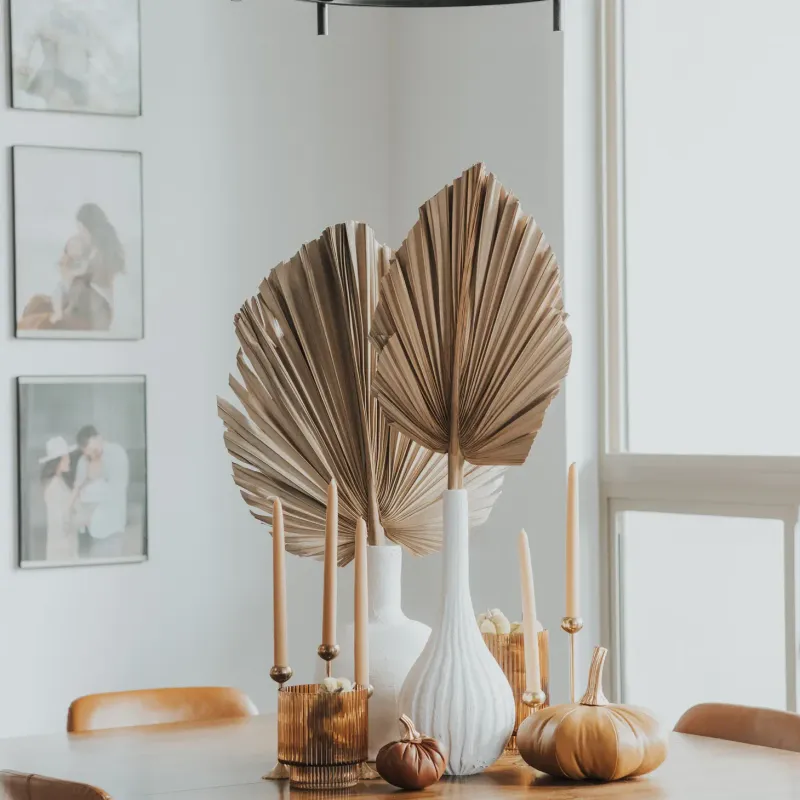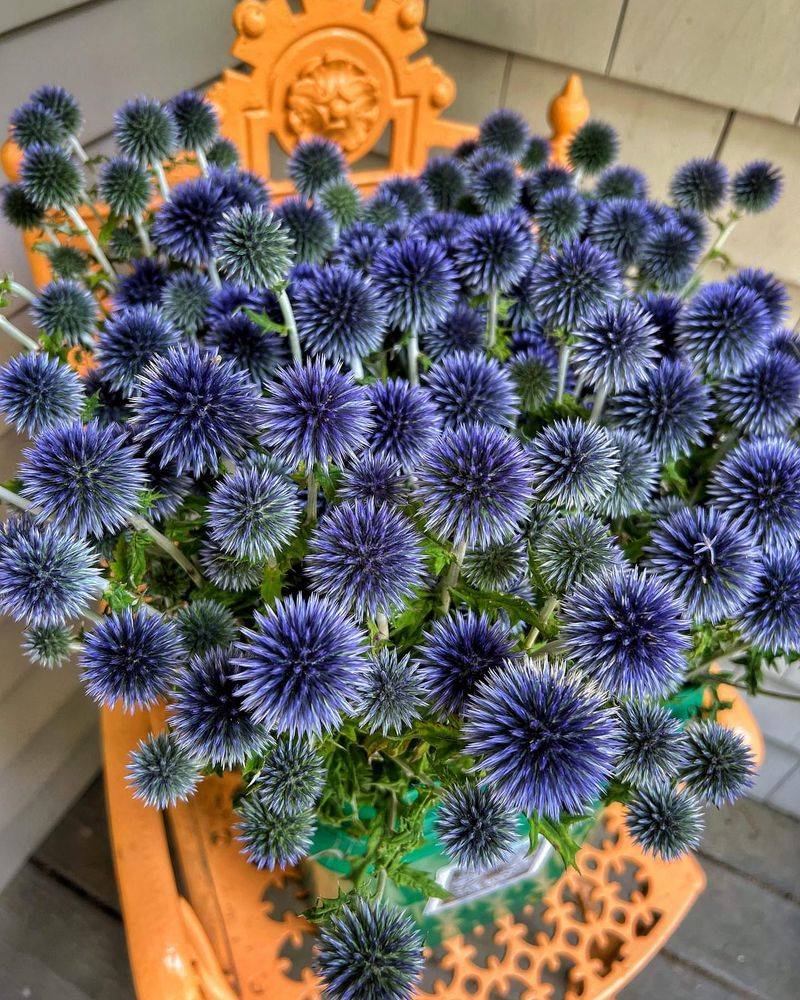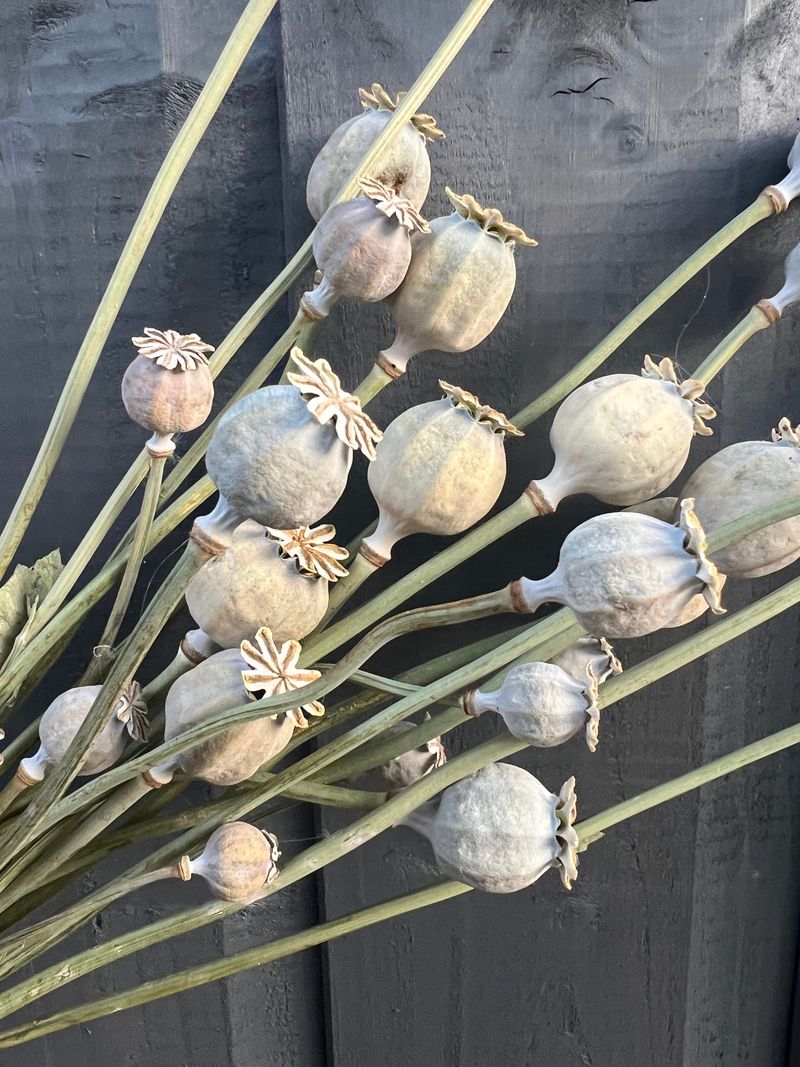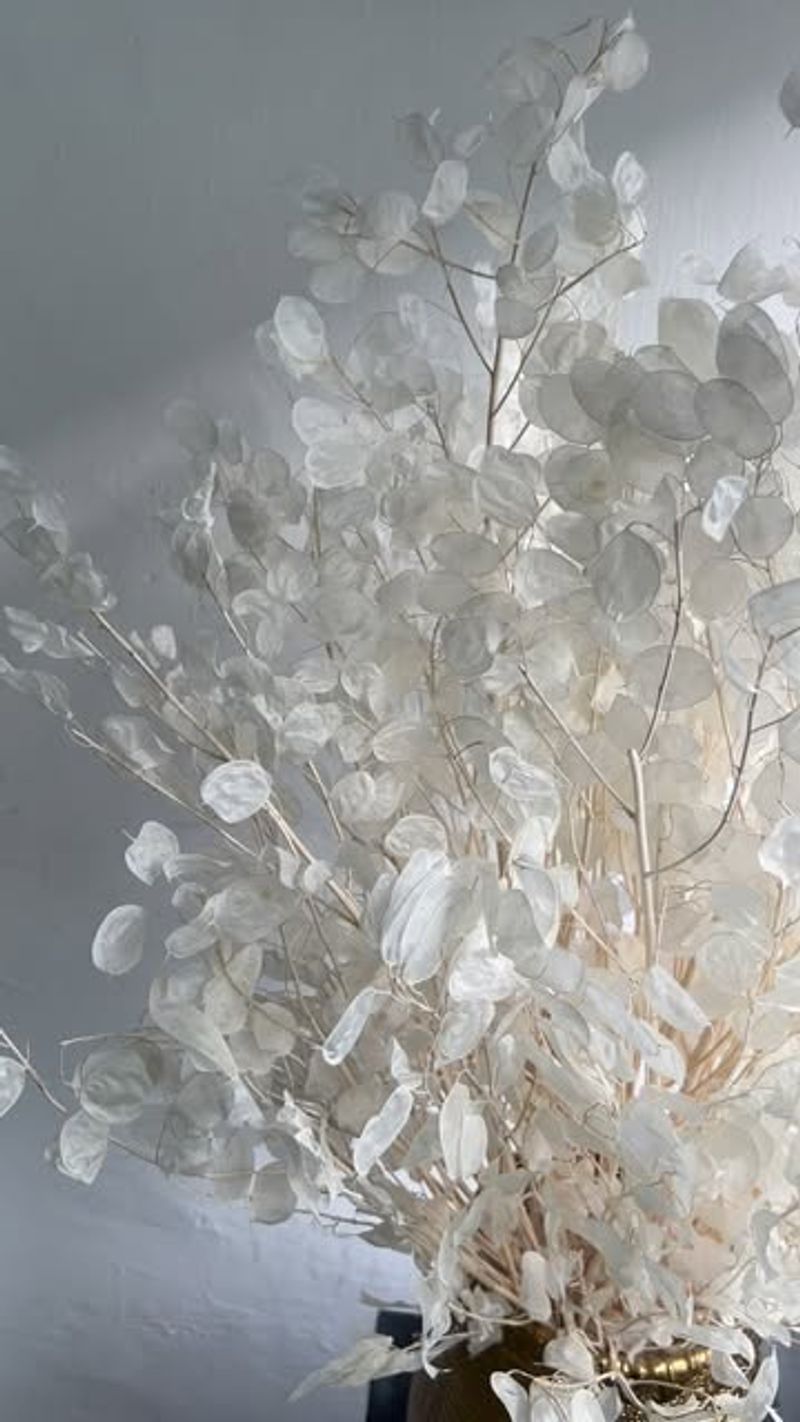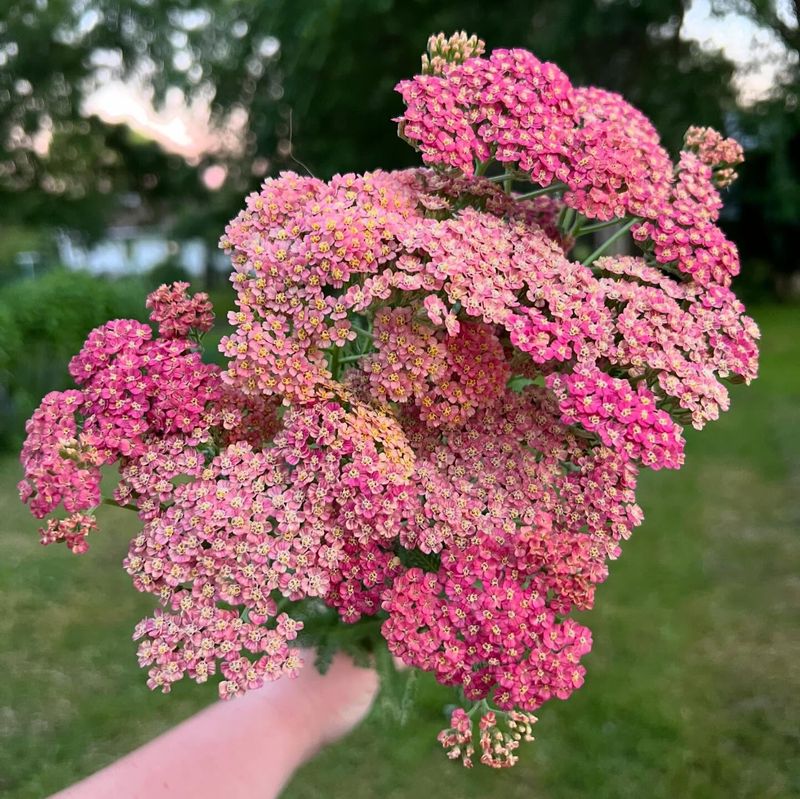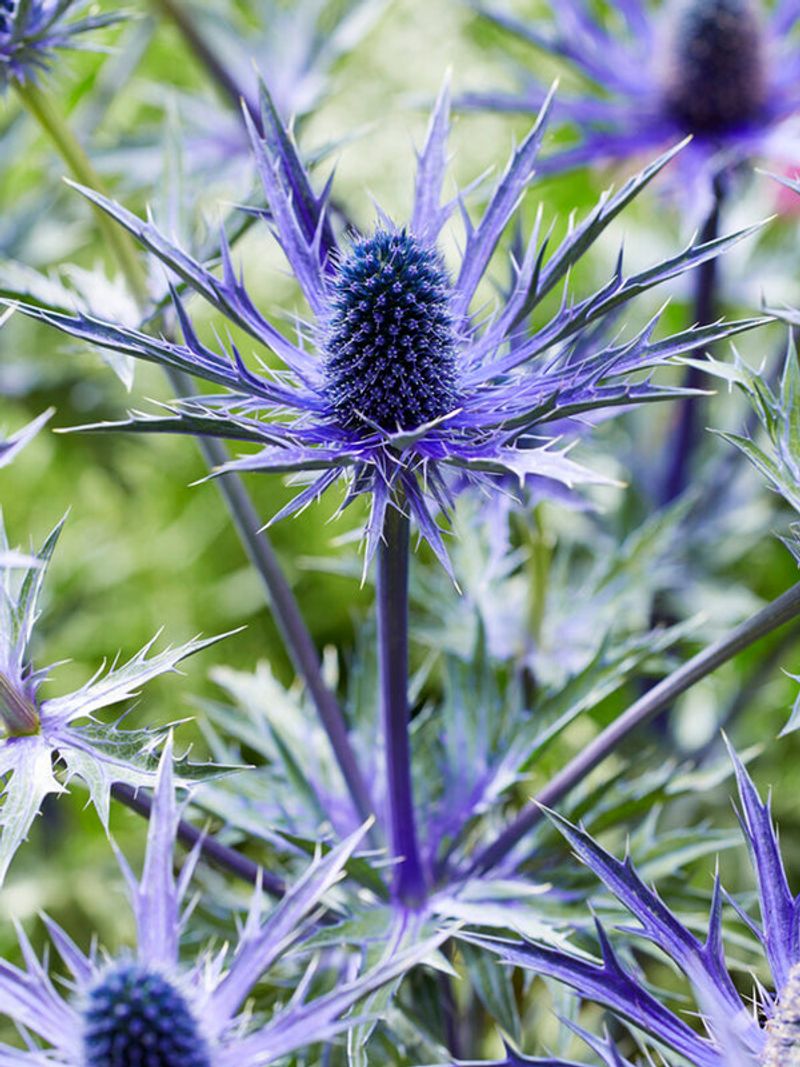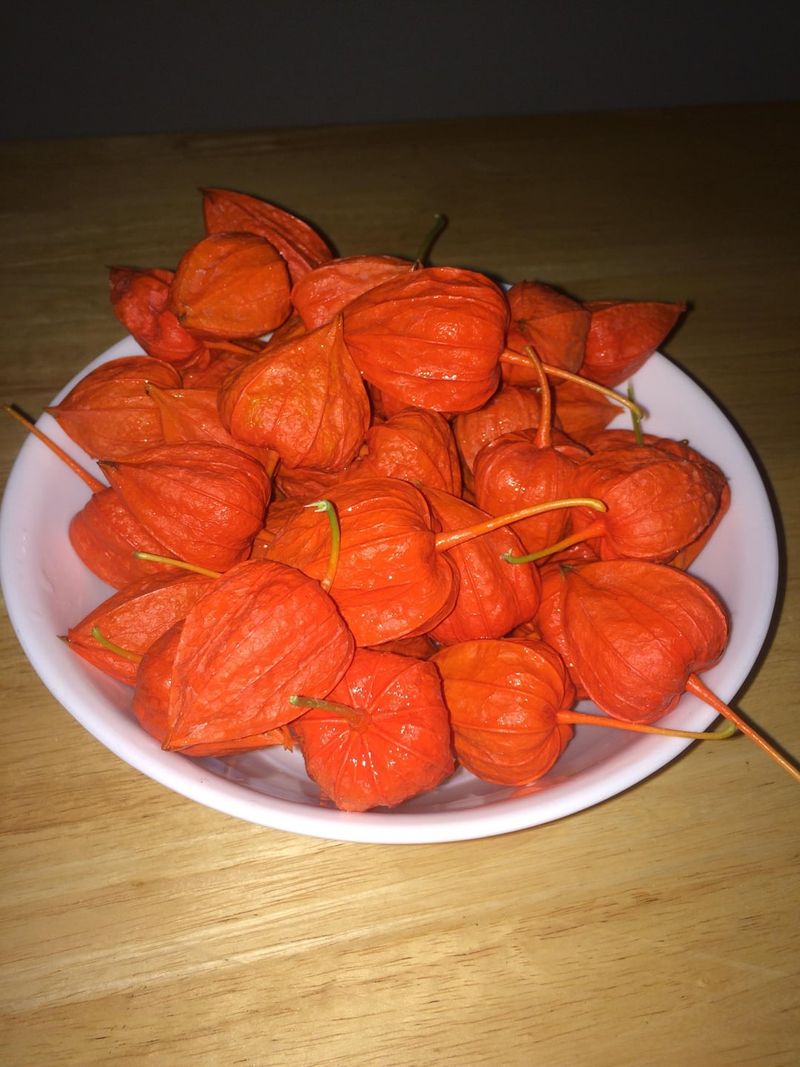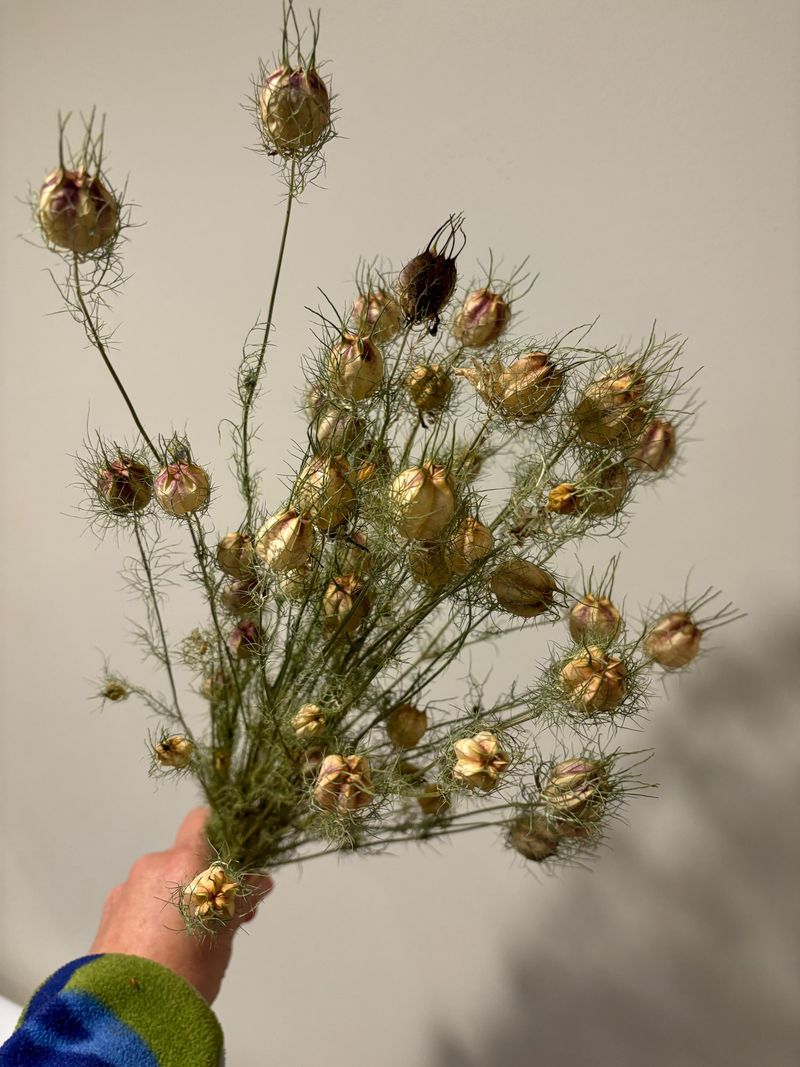Dried plants are a design dream—low-maintenance yet full of character. They bring lasting texture, muted color, and a touch of the outdoors into your home.
No watering, no wilting—just timeless natural beauty. From pampas grass to eucalyptus, these preserved botanicals add warmth and depth to any space. Whether you’re styling a rustic vase arrangement or a breezy boho wall piece, they blend effortlessly with different aesthetics.
With just a few stems and a little creativity, dried plants can elevate your decor without breaking a sweat. It’s nature’s way of staying stunning long after the harvest.
1. Lavender Stems Hold Their Charm
Long after harvesting, lavender maintains its signature scent and delicate purple hue. Bunched together with twine and hung upside down, the stems dry perfectly while preserving their distinctive fragrance.
My kitchen window always features a small bundle, offering subtle aromatherapy whenever a breeze passes through. The slender stalks work beautifully in wreaths or standing alone in a simple ceramic vase.
For best results, harvest lavender just as the flowers begin to open, when the oils are most concentrated and the color most vibrant.
2. Eucalyptus Leaves Never Disappoint
Silver dollar eucalyptus retains its distinctive round leaves and silvery-blue color when dried properly. The stems become slightly flexible yet sturdy, perfect for draping across mantels or incorporating into year-round arrangements.
Unlike some dried plants that crumble easily, eucalyptus holds its form for months. Many floral designers consider it essential for adding structure and a cool color palette to dried compositions.
During winter months, I hang several branches in my shower where the steam releases subtle fragrance – a little aromatherapy trick that costs almost nothing.
3. Pampas Grass Creates Soft Drama
Feathery plumes of pampas grass transform into statement pieces that last for years. The neutral tones complement virtually any decor style, from minimalist to bohemian, adding height and movement without overwhelming a space.
Each stem requires almost no preparation – simply cut, bring inside, and watch as they unfurl into fluffy decorative accents. Their natural beige color brightens dark corners without competing with other elements in your room.
Last fall, I placed three tall stems in a floor vase near my entryway. Twelve months later, they look exactly the same – no watering, no maintenance, just enduring natural beauty.
4. Bunny Tails Grass Brings Whimsical Texture
Small, round, and impossibly soft to the touch, bunny tails grass adds a playful element to dried arrangements. These fuzzy little puffs sit atop slender stems, creating visual interest through their unusual texture and shape.
Surprisingly durable despite their delicate appearance, they rarely shed or deteriorate when handled gently. Their neutral cream color means they work well with virtually any color scheme or seasonal decor.
A small jar of bunny tails on my desk always invites comments from visitors – they can’t resist reaching out to touch these cottony little puffs.
5. Hydrangea Blooms Age Gracefully
Few flowers transition to dried form as elegantly as hydrangeas. The large, clustered blooms retain their basic shape while developing subtle vintage-inspired color variations – from soft greens to muted purples and antique blues.
Simply placed in an empty vase and allowed to dry naturally, hydrangeas require no special techniques to preserve. The papery texture that develops actually enhances their charm, creating dimension that fresh flowers can’t match.
My grandmother taught me to collect hydrangeas in late summer when they’ve developed a slightly papery feel – this timing results in the most successful drying and color retention.
6. Billy Buttons Pop With Golden Color
These cheerful yellow spheres maintain their sunny disposition long after drying. Also known as craspedia or woollyheads, billy buttons feature perfectly round flower heads perched atop sturdy stems that rarely bend or break.
Their structural quality makes them ideal for modern arrangements where their geometric shape adds visual interest. The golden yellow color remains vibrant for years without fading, bringing warmth to neutral spaces.
After finding them at a farmers market three years ago, I’ve kept the same bunch in my office – they’ve outlasted several desk plants and continue to brighten my workspace without any care.
7. Statice Flowers Keep Their Vibrant Hues
Among dried flowers, statice stands out for its exceptional color retention. The papery blooms hold their purple, blue, and pink tones indefinitely, making them perfect for colorful long-term arrangements.
Clusters of tiny flowers create a delicate, cloud-like effect that adds both color and texture to dried bouquets. Their sturdy stems rarely break, allowing for easy arrangement in various containers.
During winter months when fresh flowers are expensive, I rely on statice to bring color to my dining table – the same bunch has served me through three holiday seasons with no signs of fading.
8. Cotton Stems Offer Rustic Simplicity
The soft, fluffy bolls of cotton stems bring organic texture and neutral tones to any arrangement. Their distinctive appearance – white puffs bursting from brown seedpods – creates visual interest that works year-round.
Surprisingly versatile, cotton stems complement farmhouse decor yet also work in modern settings where their natural form provides contrast to sleek surfaces. The stems maintain their structure indefinitely with no special care needed.
A simple mason jar filled with cotton stems has become my go-to housewarming gift – practical, long-lasting, and universally appealing without being tied to any particular season.
9. Palm Leaves Create Dramatic Silhouettes
Dried palm fronds transform into sculptural elements that command attention in any space. Their distinctive fan shapes and sturdy structure create dramatic shadows and silhouettes against walls or when backlit.
Unlike some dried plants that require careful handling, palm leaves develop a leathery texture that resists breaking or crumbling. Their natural tan color deepens beautifully with age, developing rich caramel and amber tones.
After finding a fallen palm frond at the beach last summer, I simply hung it to dry, then mounted it on my living room wall – an instant conversation piece that cost absolutely nothing.
10. Globe Thistle Maintains Its Unique Shape
Architectural and distinctive, dried globe thistles feature perfectly spherical flower heads in striking steel-blue atop sturdy stems. Their geometric precision makes them stand out in any arrangement, adding structural interest and unusual color.
The spiky texture remains intact through drying, creating tactile contrast when paired with softer dried elements. Despite their prickly appearance, they’re surprisingly durable and resist shedding or breaking.
My favorite winter centerpiece combines globe thistles with dried grasses – the blue spheres provide unexpected color during months when fresh flowers are scarce and expensive.
11. Poppy Seed Pods Offer Sculptural Beauty
After their petals fall, poppy plants develop fascinating seed heads that dry into natural sculptures. The crowns atop each pod look like tiny stars, while the pods themselves hold hundreds of tiny seeds that create a gentle rattling sound when moved.
Their neutral color and interesting shapes make them perfect for minimalist arrangements. Standing several inches tall on straight stems, they create vertical interest without overwhelming other elements.
A cluster of these pods in my bathroom has lasted for over two years, requiring no care while continuing to add organic texture to the space.
12. Lunaria Reveals Translucent Beauty
Often called money plant or silver dollar plant, lunaria develops translucent seed pods that resemble delicate silver coins. After the outer husk is gently removed, what remains are paper-thin, pearly discs that catch and filter light beautifully.
Their ethereal quality adds lightness to arrangements, contrasting nicely with more substantial dried elements. The branching stems allow for natural, cascading arrangements that create movement.
During a recent dinner party, I scattered lunaria branches down my table runner – guests were fascinated by their moon-like transparency and several asked to take stems home afterward.
13. Yarrow Stems Create Delicate Clusters
Flat-topped clusters of tiny flowers make yarrow instantly recognizable even in dried form. The umbrella-shaped flower heads maintain their structure perfectly, creating a lacy, delicate appearance that belies their sturdy nature.
Available in whites, yellows, and muted pinks, dried yarrow adds both color and interesting architecture to arrangements. The stems remain strong enough to support the flower heads indefinitely without drooping or breaking.
My kitchen herb bundle always includes dried yarrow – not only for its visual appeal but also as a nod to its traditional medicinal uses throughout history.
14. Sea Holly Brings Spiky Texture
The electric blue color of fresh sea holly transforms into a sophisticated steel-gray when dried, while maintaining its distinctive thistle-like appearance. The spiky bracts surrounding each flower head create textural interest that few other dried plants can match.
Their strong stems and durable flower heads make them ideal for arrangements where structural elements are needed. They rarely shed or deteriorate, making them practical for high-traffic areas.
A single stem mixed with softer elements creates beautiful contrast – I’ve kept the same sea holly arrangement on my coffee table for over a year, and guests still comment on its unusual texture.
15. Chinese Lantern Pods Add Fiery Color
Bright orange paper-like husks make Chinese lantern plants instantly recognizable and add warm color to dried arrangements. As they dry, the outer covering becomes delicate and skeletal, revealing the seed pod within – a transformation that enhances their visual interest.
Their distinctive shape and vibrant color make them perfect for fall displays, though they work year-round for adding warmth to neutral spaces. The stems can be shaped and bent as needed for creative arrangements.
Last autumn, I scattered these throughout my bookshelves, where their orange color complemented my collection of vintage hardcovers with surprising harmony.
16. Protea Flowers Maintain Their Exotic Structure
Known for their unusual appearance, protea flowers dry exceptionally well, retaining their distinctive shape and much of their color. The large, cone-like flower heads with their layered bracts create focal points in any arrangement.
Their substantial size and weight make them perfect standalone specimens in simple containers. Colors typically mature into rich burgundies, browns, and golds that develop more character with age.
After receiving a protea in a bouquet two years ago, I simply let it dry naturally – it now sits on my desk, its complex structure still intact and actually more interesting than when it was fresh.
17. Nigella Seed Pods Showcase Nature’s Architecture
After their delicate blue flowers fade, nigella plants develop intricate, balloon-like seed pods topped with curving horns. These architectural wonders dry naturally on the stem, transforming into miniature sculptures that add whimsical interest to arrangements.
The pods range from pale green to warm tan as they dry, developing more character with age. Their unusual shape makes them conversation starters, drawing attention even among showier dried elements.
During a recent craft fair, I noticed these selling for premium prices as specialty dried botanicals – yet they grow easily in most gardens, offering free decorative material for those who plan ahead.

